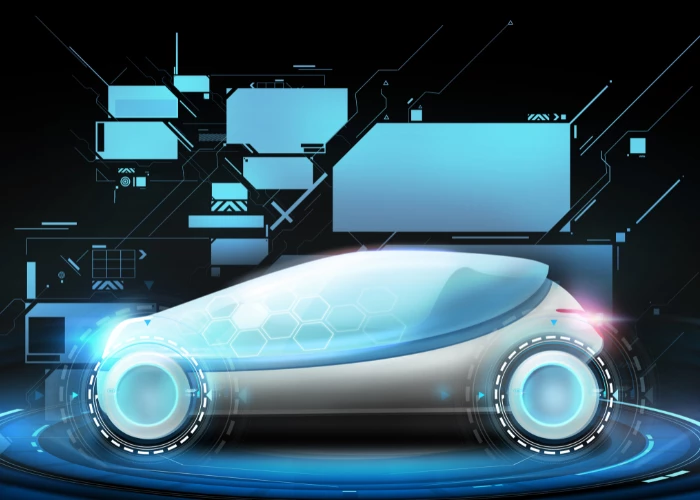Recalling the Recall?
Add bookmark
Elon Musk of Tesla fame suggested recently that the idea of a recall should be recalled. He was making the point that in the case of his Tesla Model S, much of the car’s software can be reconfigured remotely and in fact where most traditional manufacturers would require a trip to the dealer for most software updates – if they bother at all – in the Tesla case, such updates are carried out on a regular basis, overnight, while the car is safely charging in its garage. In this respect, Tesla is true to its Silicon Valley roots and relying on such on-line updates to address any problems with the software, but also to update and upgrade the car while it is in use. The Model S carries two parallel hard drives to facilitate this process and still allow the car’s basic functions to be accessible if and when required during the upgrade. Musk therefore implies that the conventional concept of having to take a car back to its dealer for recall work to be carried out is a thing of the past. However, even Teslas still contain a lot of hardware and if that goes wrong, even Musk needs to concede to a physical recall, one suspects.
Recalls announced in the past few weeks are of both types – software and hardware related. In the case of Toyota’s recall of some 1.9 million Priuses worldwide, the problem is software related. The automotive industry is still not totally at ease with ICT technologies, dominated as it still is by people trained in mechanical engineering, or even non-technology related fields such as economics, finance, human resource management, or PR. The mechanical origins of the industry, therefore still make many suspicious of modern ICT developments, and indeed the degree of robustness in engineering that has come to be imposed on the industry by successive waves of regulation and consumer pressure have often led to caution in the face of novel technologies. Contrast this with the ICT sector and its Moore’s Law of rapid innovation and rapid obsolescence, although most of us as consumers of ICT realize that all too often the level of robustness we have come to expect in our cars is sadly lacking in our ICT equipment. This is where and why this clash of software v hardware cultures often occurs in the automotive sector. In the Prius case, it would appear that a temperature regulation system for the battery can induce a failsafe, get-you-home mode, that in a few cases can result in the car grinding to a sudden halt. Only a software solution can be applied in this case and one suspects this would have to be carried out at the dealer.
The other recent case highlighted in the media involves British luxury sports car maker Aston Martin and it is purely mechanical. Part of the accelerator linkage system is made in a high grade plastic, which has failed in a few cases. The reason, it was found is that the actual plastic used by one particular Chinese supplier was not in fact of the required high grade, and was in fact not supplied by Dupont, the designated manufacturer of this material. This raises once again the question of the reliability of sourcing – often cheaper – supplies from China. In the case of an Aston Martin, the marginal cost advantage in sourcing such a part from China can hardly affect the bottom line in a meaningful way, one would think and in fact, the company was quick to announce they are pulling supply of this component from China and repatriating it to the UK. Most of an Aston Martin is sourced within Europe and for luxury cars this seems wholly appropriate. Also, we often tend to forget that despite recent progress, some key people in Chinese industry are still rooted in the production-volume led mindset of the past. In China, a modern quality ethos is primarily embodied by quality standards – in most cases imposed by foreign clients, or partners – but it has not always been internalized yet. Many Japanese manufacturers operating in China make a point of only sourcing locally from the facilities of Japanese-owned suppliers, for example. There are also still significant imports into China from more traditional car making locations of key components and subassemblies for many of the cars manufactured there.
We should also see this in the context of developments in buyer-supplier relationships in the global automotive industry over the past three decades or so. While at the beginning of this period, the 15,000 or so components for a car were typically sourced from several thousand suppliers, in a next phase this number of suppliers was generally cut by a factor of ten. Clearly this involved a combination of parts consolidation, sourcing multiple parts from a single supplier, or forcing suppliers into a kind of tiering relationship more typical in Japan, whereby smaller sub-suppliers feed their components into a larger supplier before it is then fed into the vehicle assembly process.
From the 1990s onwards a new trend emerged out of this process whereby manufacturers attempted to cut the numbers of their direct suppliers even further in order to simplify their logistics. This then led to modular supply whereby a single module, involving many different parts and subassemblies was assembled and often developed by a large so-called ‘tier one’ or ‘tier 0.5’ supplier, who was the only interface with the manufacturer. In some cases this reduced the number of suppliers feeding into an assembly plant to some thirty to fifty firms. Whilst making things generally easier for the final assembler, or OEM, it also meant that the OEM lost the direct contact with most of the supply chain that had been a feature of the traditional supply chain model. Much of the responsibility for not only product development, but also management of the upper reaches of the supply chain was subcontracted to these large suppliers.
Even these tier one or tier 0.5 suppliers are now dealing with very complex supply chains along which they cannot always see a problem coming. With some 60 to 80 percent of the value of a typical mass-produced car sourced from suppliers and subcontractors, the potential for problems ending up in the final product is of course very real. However, the consequences for missing such a problem coming up the supply chain are also very expensive. With modularization in particular, significant number of components are now shared not only within a manufacturer’s product range, but also, of course with the multiple brands now managed and marketed by many mass producers a problem can turn up in a range of apparently different cars. In many cases this can even go across different competitors. A faulty part can thus prompt a recall among several brands and manufacturers, pushing up not only the scale of the problem, but also the attendant publicity and of course the cost of dealing with it. The answer may well be a move towards greater simplicity of such automotive supply chains in order to enhance the visibility of potential issues. Bringing supplies closer to home, as Aston Martin has announced it is doing, may well be a first step in this process.
--Dr Paul Nieuwenhuis





























